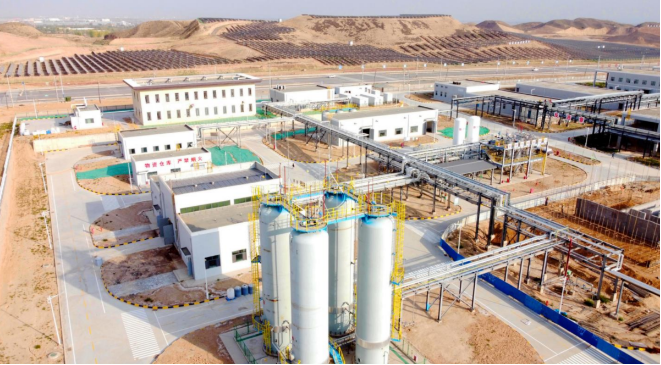Proponents of blue hydrogen produced with fossil fuels and carbon capture usage and storage (CCUS) technologies often present it as a cleaner alternative to hydrogen produced with the steam methane reforming (SMR) process, or so-called “gray hydrogen,” which is now the prevailing generation source globally. Blue hydrogen advocates also view it as a potential partner for green hydrogen produced with renewables in facilitating an emissions-free energy transition.
The blue fuel, however, is not as green as described, according to a new study from Stanford University and Cornell University. The research concludes that the CO2 footprint of hydrogen produced with fossil fuels is more than 20% greater than heat generated by natural gas or coal and around 60% greater than burning diesel oil for heat.
“We emphasize that our analysis in this paper is a best-case scenario for blue hydrogen,” the scientists said. “It assumes that the carbon dioxide that is captured can indeed be stored indefinitely for decades and centuries into the future.”
They said that blue hydrogen emissions include carbon dioxide and unburned fugitive methane and said that their modeling considered the lifecycle emissions linked to the mining, transport, storage, and use of methane. They considered several CCUS techniques for blue hydrogen, including the carbon dioxide released by the SMR process, and the removal of additional carbon dioxide from the gases created by burning methane to provide the heat and high pressure needed to drive the SMR process. They also looked at the carbon dioxide and methane from the energy used to produce electricity for the carbon-capture equipment.
According to their modeling, the carbon dioxide emissions of blue hydrogen were only between 9% and 12% lower than those of gray hydrogen.
“While carbon dioxide emissions are lower, fugitive methane emissions for blue hydrogen are higher than for gray hydrogen because of an increased use of natural gas to power the carbon capture,” the research group explained.
Fugitive methane emissions are estimated at 43 g CO2 equivalent per megajoule of hydrogen produced, the researchers said. They defined the recent bet on blue hydrogen by many fossil fuel companies as a “distraction,” and they argued that it might only delay the much-needed decarbonization of the global economy.
“We further note that much of the push for using hydrogen for energy since 2017 has come from the Hydrogen Council, a group established by the oil and gas industry specifically to promote hydrogen, with a major emphasis on blue hydrogen,” they said.
They described their findings in “How green is blue hydrogen?,” which was recently published in Energy Science & Engineering.






